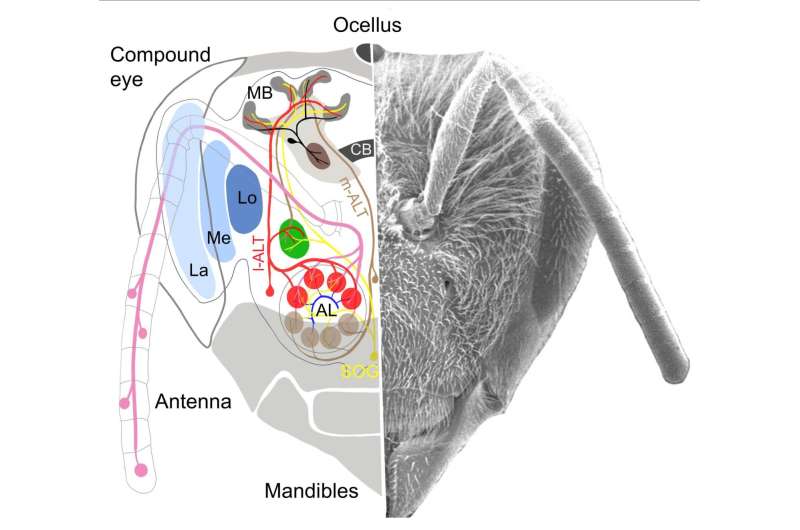Simulated honeybees can use simple brain circuits for complex learning

Honeybees may not need key brain structures known as mushroom bodies in order to learn complex associations between odors and rewards, according to new research published in PLOS Computational Biology.
The new findings surprised the research team because mushroom bodies are thought to be essential for intelligent control over instinctive behaviors—similar to the mammalian cerebral cortex.
In the study, HaDi MaBouDi of Queen Mary University of London and colleagues built a realistic computational model of the brain circuits used by bees to process olfactory information. Then, they investigated what would happen if they removed the mushroom body circuits from the simulated bees.
The researchers tested how well the simulated bees would perform on tasks commonly used to explore learning in real bees. These included tasks in which bees learn to associate different odors with different rewards.
Unexpectedly, the "mutant bees" performed just as well on many (but not all) of the odor learning tasks as do real bees with intact mushroom bodies. They could even learn to associate a mixture of two odors with reward when each individual odor was not linked to reward. To do so, the simulated bees relied on a simple neural circuit that had previously been associated only with instinctive behaviors.
"This perhaps explains why the tiny brain of bees is so good at multi-tasking and juggling so many learning behaviors and instinctual routines," says study co-author Lars Chittka. "It shows that remarkable forms of plasticity can be pervasive anywhere, even in the simplest nervous systems."
The findings also raise the question of why bees need two possibly redundant neural pathways. "In a complex odor environment where social bees must respond appropriately to dozens of pheromones in the hive but also to learned olfactory signals from rewarding flowers," Chittka says, "two parallel but intertwined pathways with overlapping functions but different priorities in the gradient from innate to learnt odor responses of various complexities might provide the required flexibility."
More information: MaBouDi H, Shimazaki H, Giurfa M, Chittka L (2017) Olfactory learning without the mushroom bodies: Spiking neural network models of the honeybee lateral antennal lobe tract reveal its capacities in odour memory tasks of varied complexities. PLoS Comput Biol 13(6): e1005551. doi.org/10.1371/journal.pcbi.1005551
Journal information: PLoS Computational Biology
Provided by Public Library of Science





















